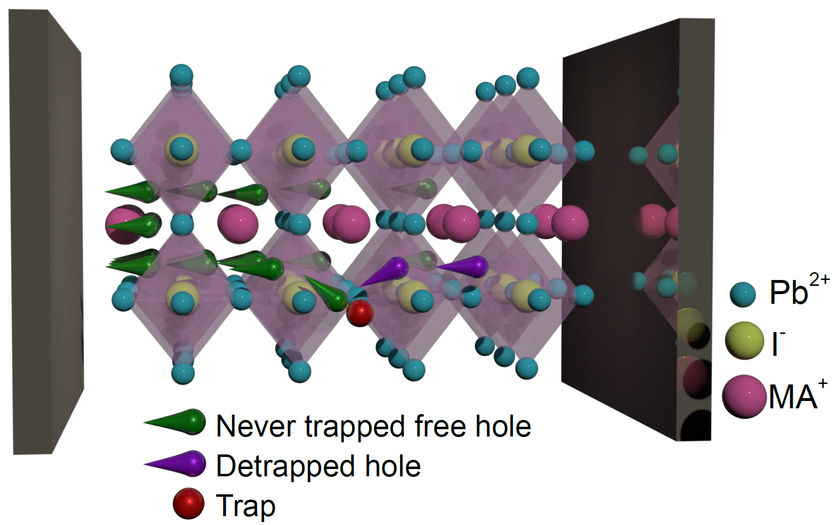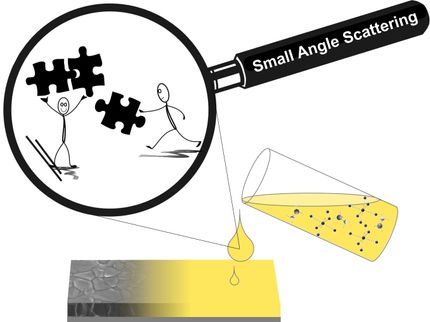Perovskite solar cells: Defects trap charge carriers - and release them again
Results could help to further improve the properties of perovskite solar cells
A new study has investigated how charge carriers in so called MAPI-perovskite semiconductors interact with different defects. The results shows that a large proportion of defects quickly releases trapped charge carriers. These results could help to further improve the properties of perovskite solar cells.

Five different types of defects in MAPI-perovskites were examined and characterised. The result: a large proportion of defects is not trapping the charge carriers for long.
© HZB
Among the most exciting materials for solar cells are the so-called MAPI semiconductors. They consist of organic methylammonium cations and lead iodide octahedra that form a perovskite structure. MAPI based solar cells have achieved efficiencies of 25 % within a few years. But so far, the semi-organic semiconductors are still ageing rapidly.
Now, for the first time, an HZB team led by Dr. Artem Musiienko has precisely characterised five different defect types and measured the interaction between these defects and the charge carriers.
Using a combination of highly sensitive spectroscopy methods, they succeeded in experimentally determining the concentration, energy, capture cross-section and charge capture time of the different defects and creating a map of the defects. By using electric pulses, they made sure that the measurements did not affect the quality of the material.
The measurement results allow the reliable differentiation between electron and hole transport and the determination of their most important parameters: Mobilities, lifetimes and diffusion lengths. "This work thus provides answers to questions that have been discussed for a long time in the field of perovskite solar cells," says Musiienko.
An important finding: a large proportion of the defects release the captured charge carriers again after a short time. "This may partly explain these particularly high efficiencies of the MAPI perovskites," says Musiienko. These results pave the way to optimise MAPI perovskites in terms of defect concentration, combining high efficiencies with good stability.
Original publication
Original publication
Artem Musiienko, Davide Raffaele Ceratti, Jindřich Pipek, Mykola Brynza, Hassan Elhadidy, Eduard Belas, Marián Betušiak, Geraud Delport, and Petr Praus; "Defects in Hybrid Perovskites: The Secret of Efficient Charge Transport"; Advanced Functional Materials (2021):
Organizations
Other news from the department science

Get the chemical industry in your inbox
By submitting this form you agree that LUMITOS AG will send you the newsletter(s) selected above by email. Your data will not be passed on to third parties. Your data will be stored and processed in accordance with our data protection regulations. LUMITOS may contact you by email for the purpose of advertising or market and opinion surveys. You can revoke your consent at any time without giving reasons to LUMITOS AG, Ernst-Augustin-Str. 2, 12489 Berlin, Germany or by e-mail at revoke@lumitos.com with effect for the future. In addition, each email contains a link to unsubscribe from the corresponding newsletter.




























































